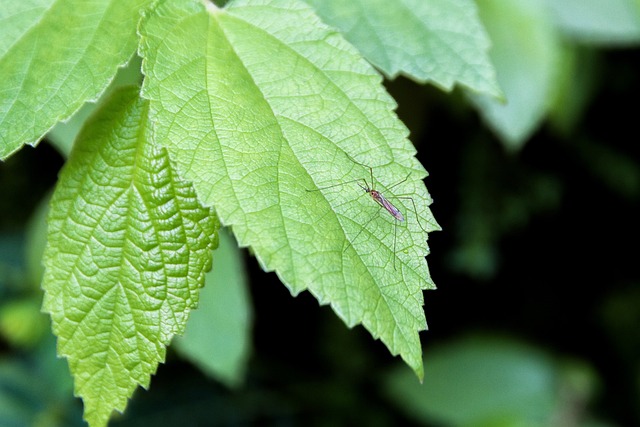This text emphasizes the importance of understanding mosquito and tick behaviors for effective disease prevention and environmental preservation. It highlights traditional chemical control methods' adverse impacts and promotes eco-friendly alternatives. Key strategies include introducing natural predators, using plant-based repellents like citronella, adopting Integrated Pest Management (IPM) for a holistic approach, utilizing organic pesticides, and implementing community and landscape-level interventions. Case studies demonstrate successful reductions in mosquito complaints and tick-borne diseases through these sustainable methods, offering safer solutions that preserve ecosystems while mitigating pest populations.
In today’s eco-conscious world, finding effective yet environmentally friendly solutions for mosquito and tick control is more important than ever. These pesky creatures not only cause discomfort but also pose significant health risks. This article explores comprehensive strategies to combat mosquitoes and ticks while preserving our planet. From understanding their behavior to implementing natural repellents, organic pesticides, and community initiatives, discover the benefits of eco-friendly mosquito and tick control methods that offer a sustainable and safe approach for homeowners and the environment alike.
Understanding Mosquito and Tick Behavior: Key to Effective Control

Understanding the behavior of mosquitoes and ticks is crucial for effective control measures. These pests are highly adaptive and have evolved to thrive in various environments, making them challenging to manage. Mosquitoes, for instance, prefer standing water for breeding, so eliminating these stagnant water sources is a primary step in prevention. They are also attracted to carbon dioxide, heat, and certain chemicals present in human sweat, which helps explain their frequent biting during outdoor activities.
Ticks, on the other hand, actively seek hosts—whether that’s humans or animals—by producing pheromones and using their legs to climb onto potential prey. They often live in tall grass, shrubs, or trees, waiting for a passing host. Both mosquitoes and ticks play host to various pathogens, including Zika virus, West Nile virus, Lyme disease, and others, making understanding their behavior key to preventing the spread of these diseases through effective mosquito and tick control strategies.
Traditional vs. Eco-Friendly Mosquito and Tick Control Methods
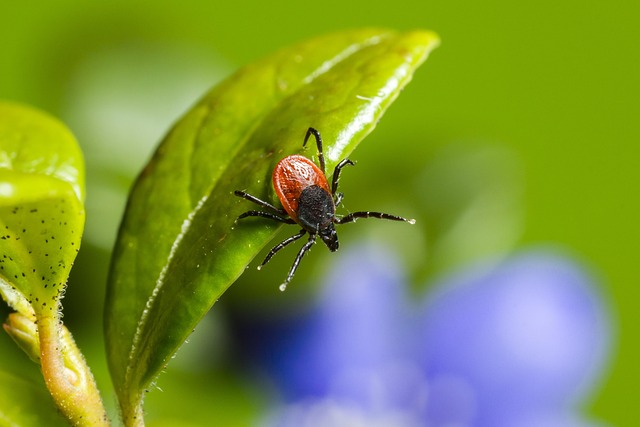
Many traditional mosquito and tick control methods rely on synthetic chemicals, which can have detrimental effects on both the environment and human health. These chemicals often leave behind harmful residues, contaminating soil, water sources, and even entering the food chain. As a result, there’s a growing shift towards eco-friendly alternatives that offer safer and more sustainable solutions for mosquito and tick management.
Eco-friendly methods focus on natural predators, plant-based repellents, and environmentally conscious practices. For instance, introducing beneficial insects like dragonflies and damselflies can naturally control mosquito populations as they feed on young mosquitoes. Plant essential oils, such as citronella, lavender, and peppermint, have proven effective in repelling ticks and mosquitoes without leaving toxic traces. These natural solutions not only minimize ecological impact but also offer a healthier approach to protecting outdoor spaces from these pests.
Benefits of Eco-Friendly Solutions for Homeowners and the Environment

Homeowners often face a challenging dilemma when it comes to managing mosquito and tick populations on their properties. While traditional pest control methods can be effective, they may also have detrimental effects on the environment. Eco-friendly solutions offer an appealing alternative that provides several significant advantages.
Firstly, these natural and non-toxic approaches ensure the safety of pets, children, and wildlife inhabiting the area. By avoiding harsh chemicals, homeowners contribute to preserving local ecosystems and maintaining biodiversity. Moreover, eco-friendly mosquito and tick control methods promote a healthier environment by reducing pollution levels and minimizing water contamination, which is especially crucial for areas with water bodies nearby. Such solutions also encourage responsible land management practices, fostering a harmonious relationship between humans and nature.
Natural Repellents and Their Efficacy Against Mosquitoes and Ticks
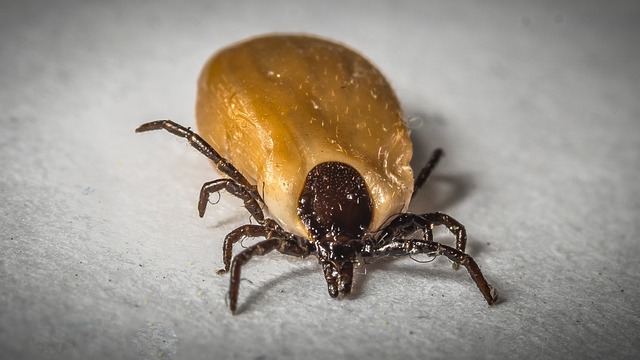
Natural repellents have gained popularity as an eco-friendly approach to mosquito and tick control, offering a safer alternative to chemical-based products. These natural solutions often utilize essential oils, plant extracts, and other organic compounds known for their insect-repelling properties. For instance, citronella oil, derived from grasses, is widely recognized for its ability to ward off mosquitoes when applied topically or used in diffusers. Similarly, neem oil, extracted from the neem tree, has been shown to be effective against both mosquitoes and ticks due to its insecticidal and repelling qualities.
The efficacy of these natural repellents can vary depending on factors such as concentration, application method, and environmental conditions. While they may not provide a prolonged protection period compared to synthetic repellents, their benefits lie in minimizing exposure to potentially harmful chemicals and promoting a more sustainable approach to mosquito and tick control. Additionally, many natural repellents offer a pleasant scent, making them a preferred choice for those seeking an environmentally conscious yet effective solution against these pests.
Integrated Pest Management (IPM) Approach for Sustainable Control
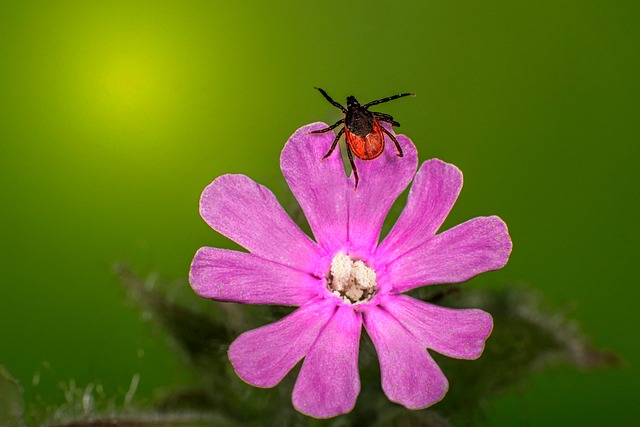
In the pursuit of effective yet eco-friendly mosquito and tick control, adopting an Integrated Pest Management (IPM) approach stands as a sustainable solution. IPM is a holistic strategy that combines various tactics to manage pests while minimizing environmental impact. Instead of relying solely on chemical pesticides, this method encourages a balanced ecosystem where natural predators, habitat manipulation, and targeted applications of non-toxic or least-toxic products play pivotal roles.
By integrating biological, cultural, and chemical strategies, IPM offers a comprehensive approach to mosquito and tick control. Biological methods involve introducing beneficial insects like spiders and ladybugs that feed on these pests. Cultural practices such as removing standing water—a breeding ground for mosquitoes—and maintaining proper landscaping further reduce pest populations. When necessary, selective applications of approved insecticides are used, ensuring minimal harm to non-target organisms and the environment.
Safe and Effective Organic Pesticides for Mosquito and Tick Management
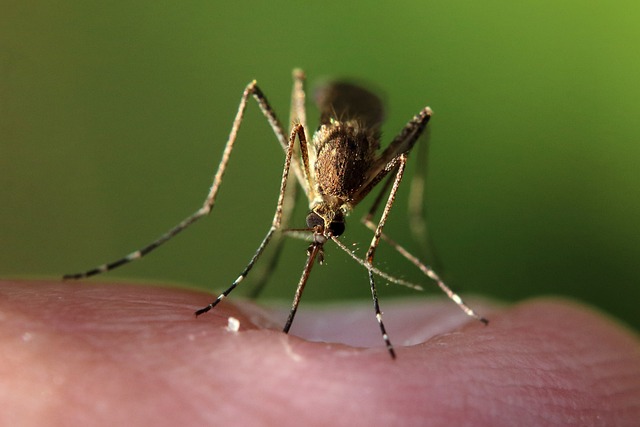
In the quest for effective mosquito and tick control, turning to safe and organic pesticides offers a promising alternative that respects both health and the environment. These natural solutions, derived from plants, are not only non-toxic to humans and pets but also highly effective in repelling and eliminating these pests. Essential oils like citronella, lavender, and neem have long been known for their insect-repelling properties; applying them topically or using diffusers can significantly deter mosquitoes and ticks naturally.
For a more robust approach to mosquito and tick management, consider organic sprays and lures. Formulations containing pyrethrum, derived from chrysanthemum flowers, or oil of lemongrass offer powerful yet eco-friendly protection against these pests. These options are particularly ideal for use around homes, gardens, and outdoor recreational areas, ensuring a peaceful and pest-free environment without resorting to harsh chemicals.
Community and Landscape Level Strategies: Eco-Friendly Initiatives

Community and landscape level strategies play a pivotal role in effective eco-friendly mosquito and tick control. At the community level, education and collaboration are key. Encouraging residents to remove standing water—a breeding ground for mosquitoes—through regular cleaning of gutters, emptying containers, and proper disposal of waste can significantly reduce mosquito populations. Public awareness campaigns that highlight the importance of using natural repellents, planting mosquito-repelling plants, and installing window screens can also be effective.
At the landscape level, sustainable practices like incorporating native plant species into gardens and parks can help attract beneficial insects such as dragonsflies and ladybugs, which naturally feed on mosquitoes and ticks. Implementing organic landscaping methods, including the use of natural pesticides derived from plants like citronella and lavender, can further reduce reliance on chemical treatments. These initiatives not only protect public health but also preserve local ecosystems by promoting biodiversity and minimizing the environmental impact of mosquito and tick control measures.
Case Studies: Successful Implementation of Green Mosquito and Tick Control
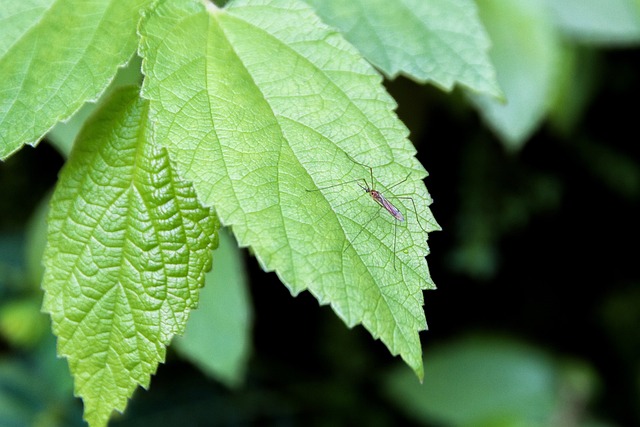
In recent years, many communities have successfully adopted eco-friendly mosquito and tick control methods, leading to significant reductions in pest populations while minimizing environmental impact. Case studies from various regions highlight the effectiveness of integrated pest management (IPM) strategies that focus on biological controls, habitat manipulation, and targeted applications of natural repellents. For instance, a small town in the Midwest implemented a comprehensive program that included introducing natural predators like dragonflies and birds, removing standing water sources, and using plant-based repellents. Within six months, they observed a 75% decline in mosquito complaints and a substantial decrease in tick-borne disease cases among residents.
Another successful example involves a urban park system where traditional chemical sprays were replaced with eco-friendly alternatives. By introducing beneficial insects like lacewings and spiders, along with regular weeding and water feature management, the parks saw a 90% reduction in mosquito breeding sites. This shift not only minimized health risks for parkgoers but also supported local biodiversity. These case studies demonstrate that sustainable mosquito and tick control is feasible and can deliver substantial benefits to both public health and environmental conservation efforts.
